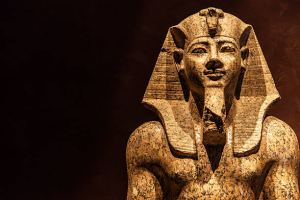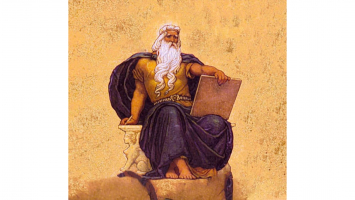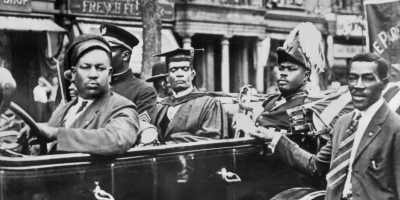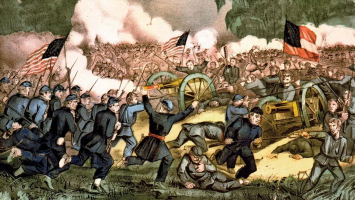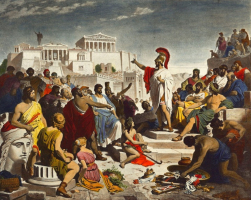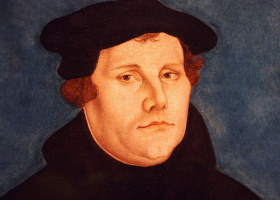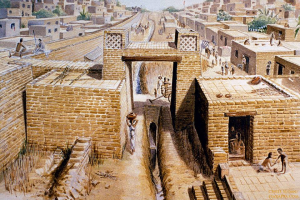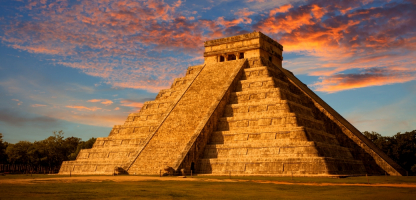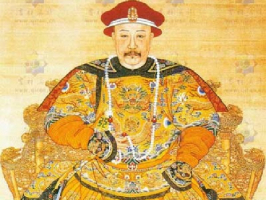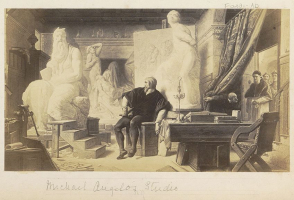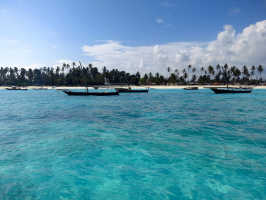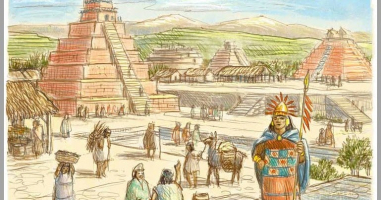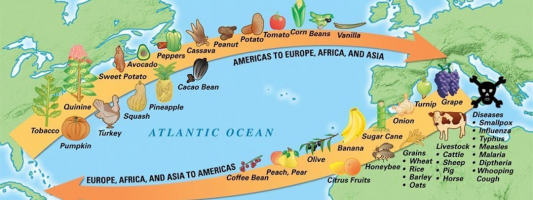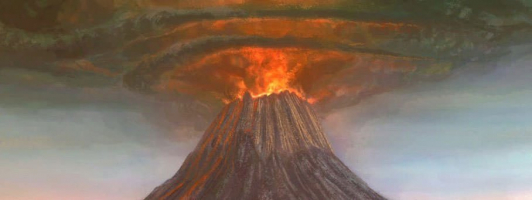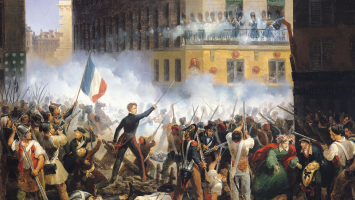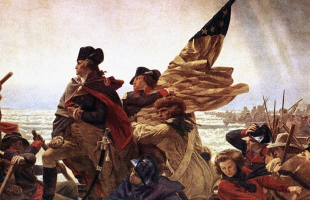Top 10 Interesting Facts About The Great Chinese Admiral - Zheng He
In the early Ming Dynasty, Zheng He served as the Yongle Emperor of China's top advisor. He is regarded as one of China's greatest admirals in history and is ... read more...well-known for the seven grand expeditions he undertook between 1405 and 1433. Here are ten fascinating facts about Zheng He, one of the finest navigators of the fifteenth century along with Vasco da Gama and Christopher Columbus.
-
Zheng He was first known as Ma He. Around 1371, he was born into a Muslim family. He had four sisters and an older brother. Ma is the Chinese equivalent of Muhammad. The fact that both his father and grandfather possessed the title "hajji" shows that they had visited Mecca on pilgrimage. His ancestors were early Mongol Yunnan governors under the rule of the Yuan Dynasty.
Zheng He is an admiral and diplomat who assisted in spreading China's commercial and marine dominance throughout the areas surrounding the Indian Ocean. Nearly a century before the Portuguese reached India by sailing around the southern tip of Africa, he led seven naval journeys.
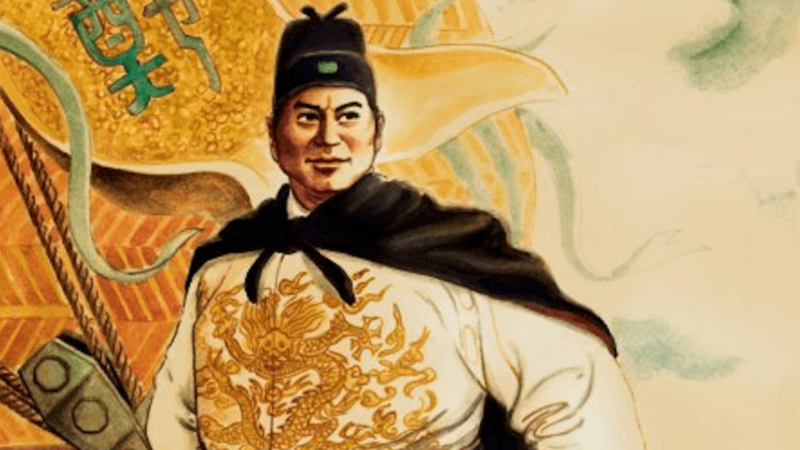
Twitter 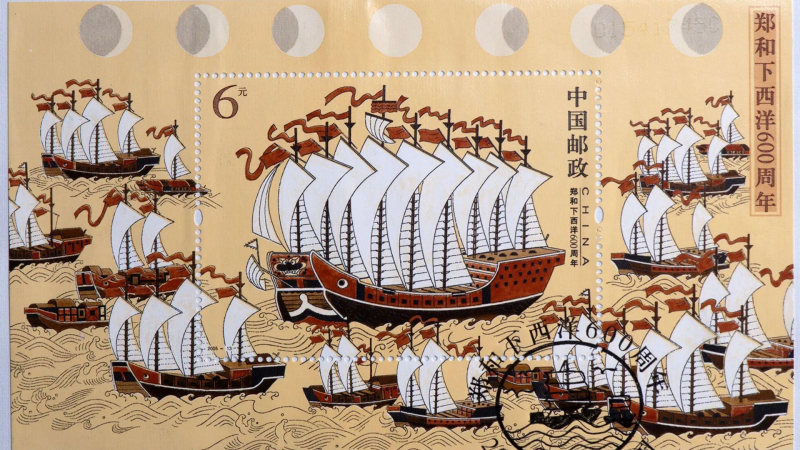
Encyclopedia Britannica -
Zheng He belonged to a Hui (Chinese Muslim) household. His father had performed the hajj (pilgrimage) to Mecca. His ancestors included an early Mongol governor of Yunnan province in southwestern China, as well as King Muhammad of Bukhara (now in Uzbekistan). The family name Ma was taken from the Chinese spelling of Muhammad.
Yunnan, the last Mongol hold in China, was reconquered in 1381, when he was around ten years old, by Chinese forces headed by generals of the Ming dynasty, who had defeated the Yuan (Mongol) dynasty in 1368. Ma Sanbao (later Ma He), as he was then known, was one of the youths seized, castrated, and forced into the army as an orderly. He was assigned to the household of Zhu Di, the Prince of Yan and the fourth son of Zhu Yuanzhang, the first Emperor of the Ming Dynasty. Ma He had established himself as a subordinate officer competent in war and diplomacy by 1390 when those men were placed under the command of the Prince of Yan. Ma had also established powerful allies in court.
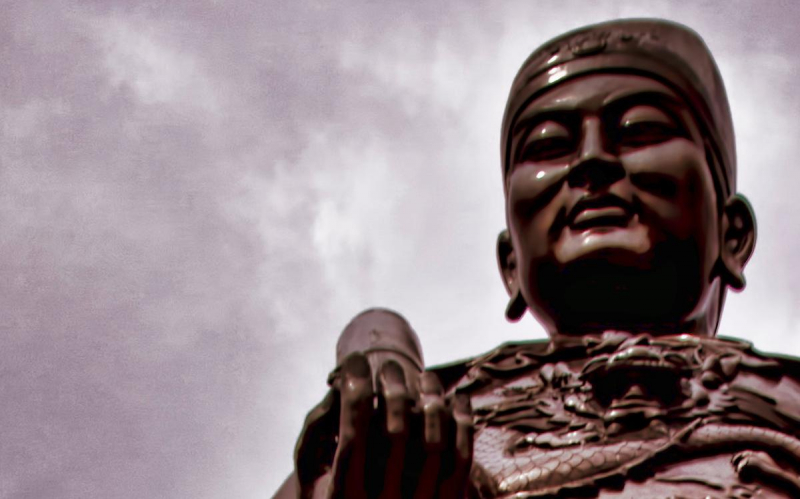
The Hindu 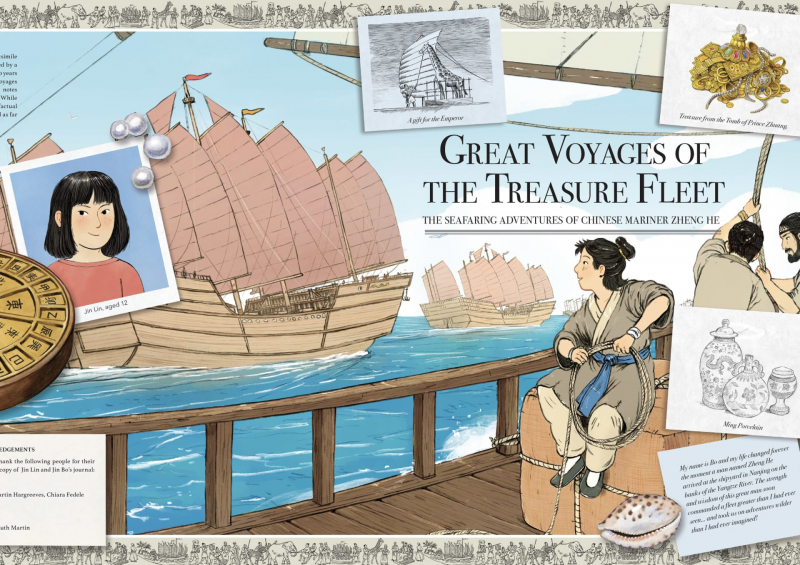
Arena Illustration -
After being assigned to the family Zhu Di, Ma He became a chief aide of the Prince of Yan, which proves that he was talented and reliable.
Ma He was taught military warfare and tactics by Zhu Di, and he also gave him permission to go to school. By 1390, Zhu Di was in charge of the forces, and Ma He fought alongside the Prince of Yan in a number of conflicts across China.
Ma He created a name for himself as a military officer, made friends with powerful people, and won the prince's respect and confidence.
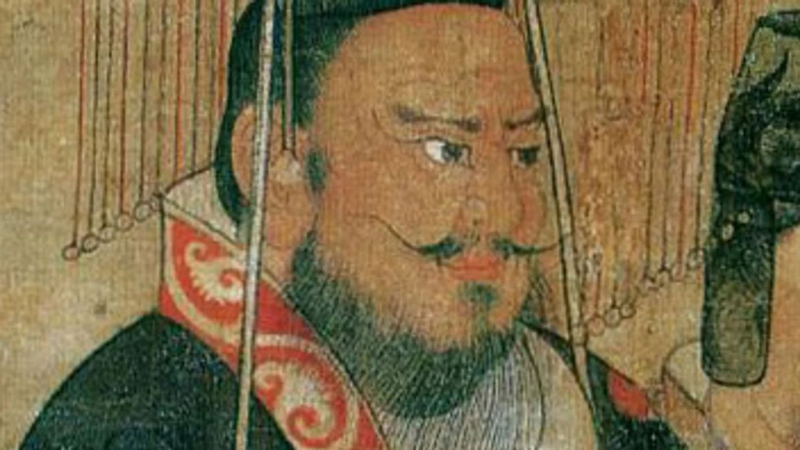
World History Encyclopedia 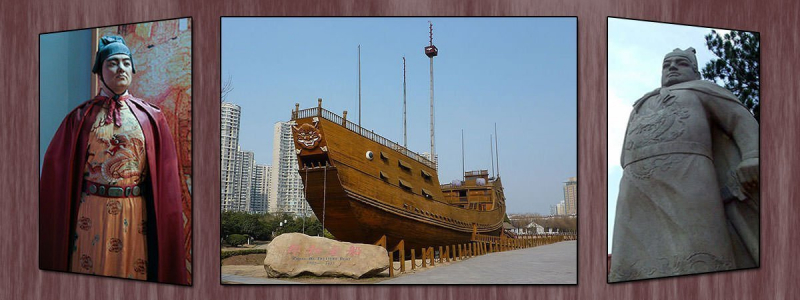
Learnodo Newtonic -
When Emperor Zhu Yuanzhang passed away, Zhu Di was the emperor's eldest surviving son because his older brothers had all perished young. But Zhu Di's nephew, the crown prince's son, succeeded his uncle as Jianwen Emperor and made an effort to contain his uncle's influence. Zhu Di fought back and launched an offensive against his nephew.
Ma He was one of the commanders in charge of this operation, which finally resulted in Zhu Di's ascension to the position of Yongle Emperor in 1402 Ma He was a crucial campaign strategist as well.
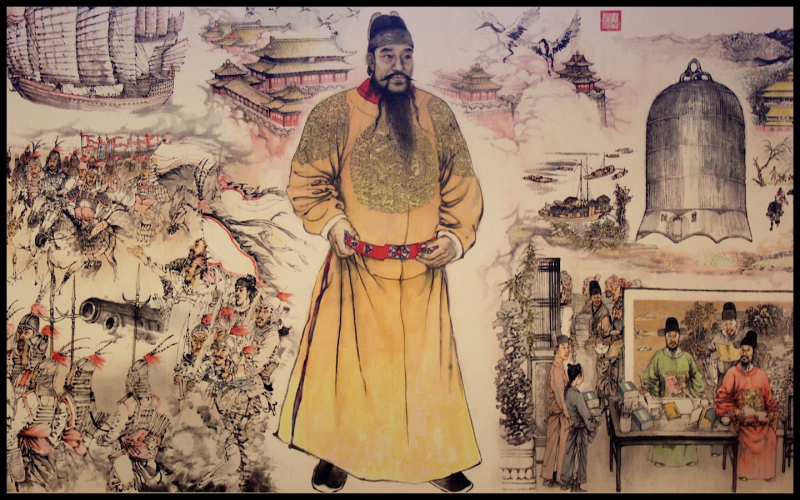
The Yongle Emperor - ThoughtCo 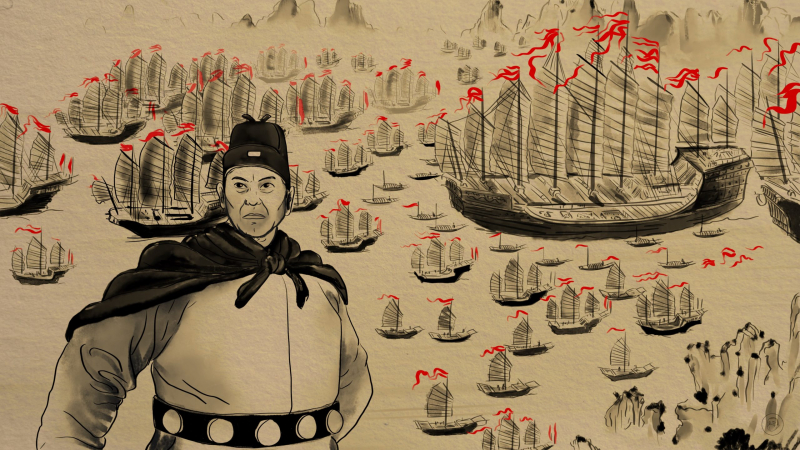
SupChina -
Zheng He's most significant function was serving as the new treasure fleet's commander-in-chief and acting as the emperor's main representative to the nations in the Indian Ocean basin. In the fall of 1405, the enormous fleet of 317 junks, manned by more than 27,000 men, set sail from Nanjing under the command of the Yongle Emperor. Zheng He had attained the greatest status ever for a eunuch in Chinese history at the age of 35.
Zheng He and his armada set out for Calicut on the western coast of India with a mission to collect tribute and build relationships with monarchs throughout the Indian Ocean. It would be the first of the treasure fleet's seven expeditions, all of which would be led by Zheng He and take place between 1405 and 1432.
Zheng He was a naval commander who negotiated trade agreements, battled pirates, installed puppet rulers, and brought back payment in the form of gems, drugs, and exotic animals for the Yongle Emperor. In addition to the city-states that are today Indonesia, Malaysia, Siam, and India, he and his crew also journeyed to and conducted business with the Arabian ports of Saudi Arabia and Yemen.
Zheng He revered Tianfei, the Celestial Consort and sailor's guardian, despite having been raised a Muslim and having visited the shrines of Islamic holy men in Fujian Province and abroad. In the 900s, Tianfei was a mortal woman who attained enlightenment as an adolescent. She was able to save her brother's life by being endowed with the ability to predict the future.
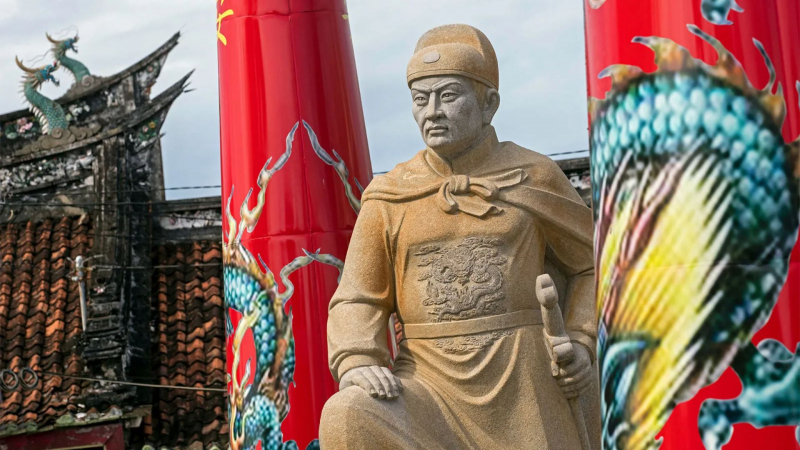
Encyclopedia Britannica 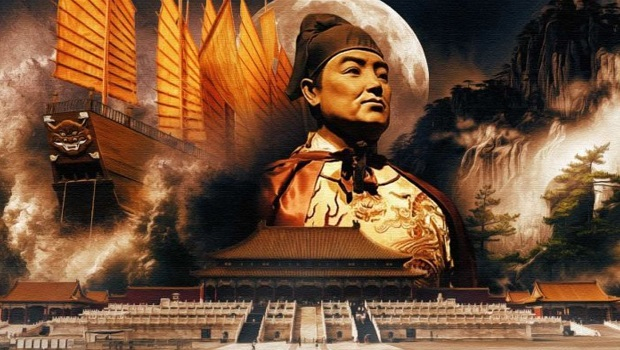
nghiencuuquocte.org -
Zheng He was given command of a massive fleet with about 27,000 soldiers. He oversaw seven lengthy expeditions to the Indian Ocean between the years 1405 and 1433, taking between 40 and 63 ships. His expeditions established Chinese dominance in the area.
All the ships of Christopher Columbus and Vasco da Gama put together could have been stored on a single deck of a single ship in the fleet that sailed under Zheng He, such as the size of his fleet. His fleet's largest vessels were many times bigger than any wooden ship that had ever been built.
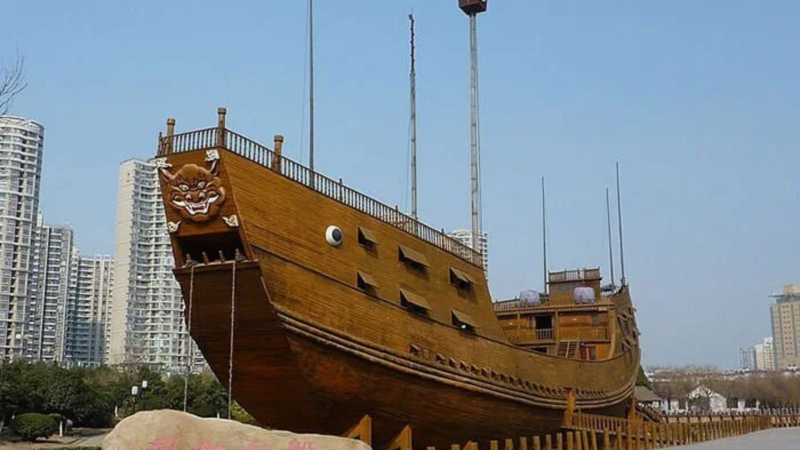
A full-size model of a middle-sized treasure ship of Zheng He - learnodo-newtonic.com 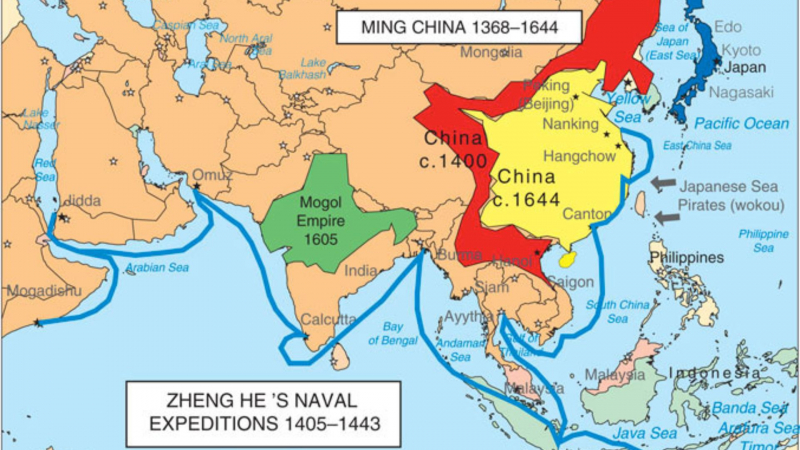
ChinaConnectU -
Another fascinating truth about Zheng He admiral is that his voyages exposed China to many new things.
The fleet of Zheng He visited various places, including Brunei, Java, Thailand, India, Arabia, and Africa while traveling as far west as that continent. He brought various items from China, including silk, porcelain, gold, and silver, to the area. He returned with supplies for construction, fuel, and unusual items. Giraffes and zebras from Africa were used as ornamental animals in the Chinese imperial garden. With Zheng's fleet, Arab glass workers entered China, and as a result, glass later became a typical Chinese utensil.
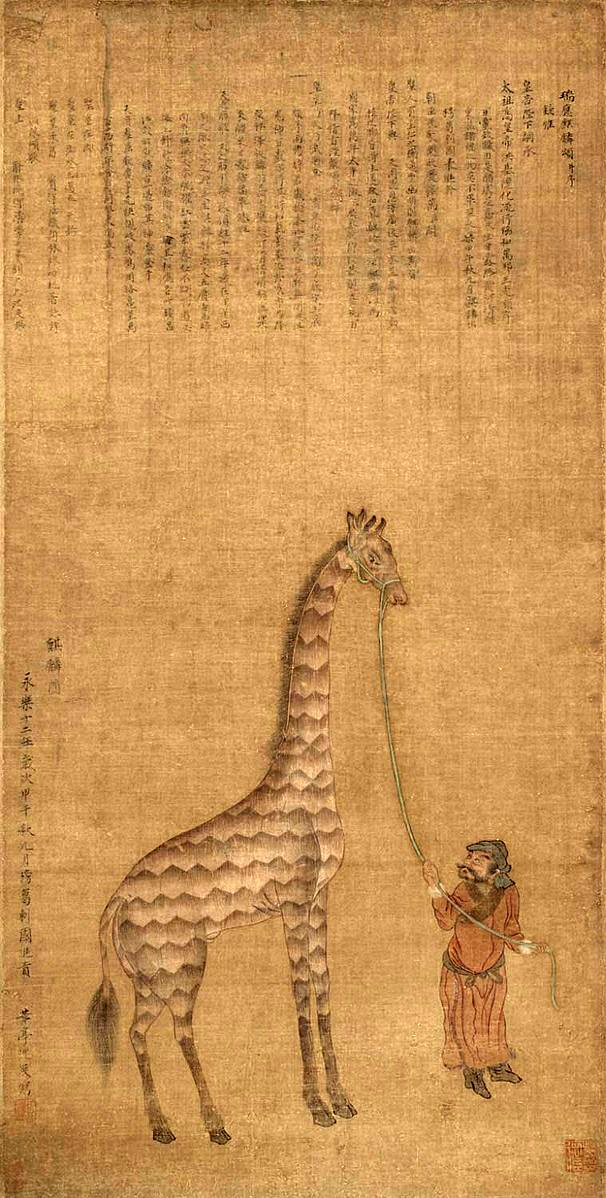
African Giraffe presented to Ming emperor Zhu Di - Twitter edhaje -
The fleet's inaugural trip in 1405 included 317 ships and more over 27,000 men. At Liujiagang, a port on the Yangzi River close to Suzhou, the navy came together. Thousands of bolts of fine silk, embroideries, cotton fabric, gold, iron, salt, hemp, tea, wine, oil, porcelain, and candles were among the numerous large-scale exports carried by the ships. The fleet traveled from Champa, Java, Malacca, Semudera, and Lambri in northern Sumatra along the southeast coast of China. It then crossed the Indian Ocean to reach the important trading ports of Ceylon, Quilon, and Calicut on the southwest coast of India. The flotilla pleased the local authorities while trading with the numerous ports. In order to pay respects, ambassadors from Calicut, Semudera, Quilon, Malacca, and other nations accompanied the departing fleet to Nanjing. The Chinese imperial diplomatic system had long included the trade-in tributes. The emperor received the foreign envoys, who were frequently a mix of diplomats and merchants, at his court with offers of regional specialties in exchange for much more expensive presents and lavish hospitality.
The Chinese pirate Chen Zuyi, who had taken control of the Malacca Strait and posed a threat to the trade routes, was confronted by the armada as it was making its way home. The pirates were vanquished by Zheng He's fleet, their hideout in Palembang was destroyed, and Chen was captured, sent to Nanjing, and put to death. The South China Sea to the Indian Ocean was opened up by this military action.
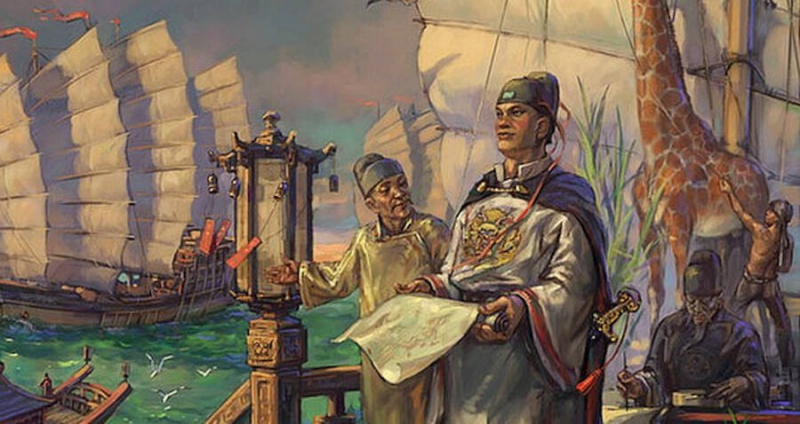
Zheng He: Medieval China's Legendary Muslim Explorer - All That's Interesting 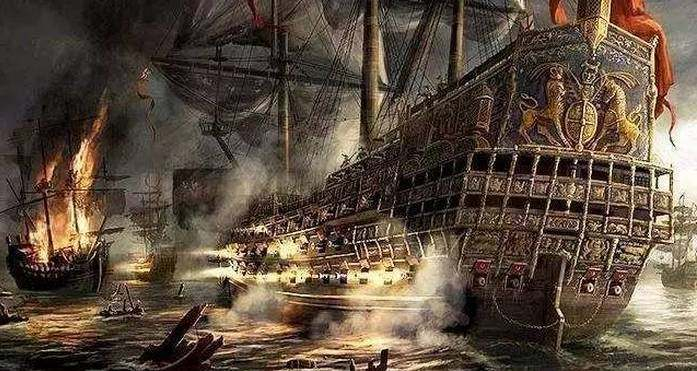
Harreira -
After the Yongle Emperor's death in 1424, his son, the Hongxi Emperor, stopped making sea expeditions because he believed they were too expensive. By that time, Zheng had completed six of his journeys. The Hongxi Emperor also passed away the following year, and the Xuande Emperor, who succeeded him, dispatched Zheng He and his navy once more in 1432. Zheng He's seventh journey turned out to be his final one, and he passed away in 1433 during the return trip. He was buried in the ocean.
As mentioned, the travels were halted for a while when the Yongle emperor passed away. The Xiande emperor issued a final trip order in 1431. Restoring harmony between the Siam and Malay kingdoms of Malacca was one of the mission's secondary goals. The Chinese emperor chastised the Siamese king in the imperial edict Zheng He brought to him for harassing Malacca and imprisoning the Malaccan king on his trip to the Ming capital. The main goal of the journey was to re-establish peace and order in the South China Sea. Zheng In 1433, Wang Jinghong, his deputy, led the fleet home after he passed away near the west coast of India. Zheng He might have been interred according to Islamic custom at sea. Outside of Nanjing, a symbolic grave that still stands there is filled with the admiral's hats and attire.
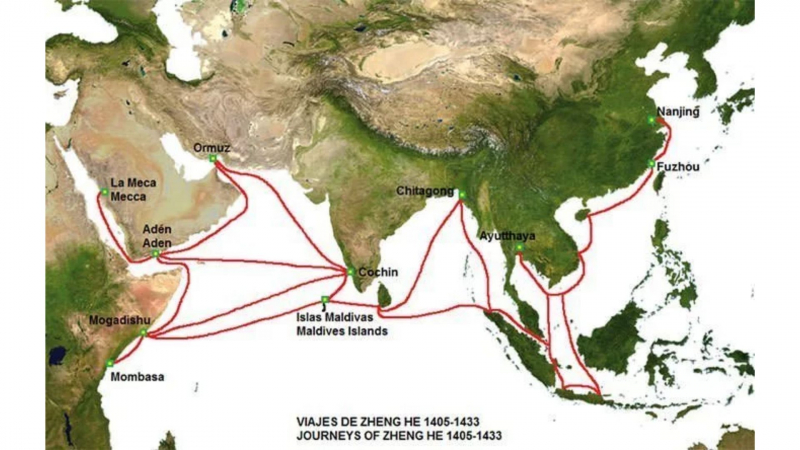
The route of the seven voyages of Zheng He’s fleet - learnodo-newtonic.com Lindsay Truesdale -
The greatest admiral in Chinese history is regarded as Zheng He. His expeditions took place almost a century before those of Da Gama and Columbus. Zheng He temples have been built by Indonesian Chinese in Jakarta, Cirebon, Surabaya, and Semarang.
Zheng He Xia Xiyang was a special television series created by China's CCTV in 2005 to commemorate his expeditions' 600th anniversary. Since 2005, the eleventh of July has been observed as China National Maritime Day to honor Zheng He's pioneering trip.
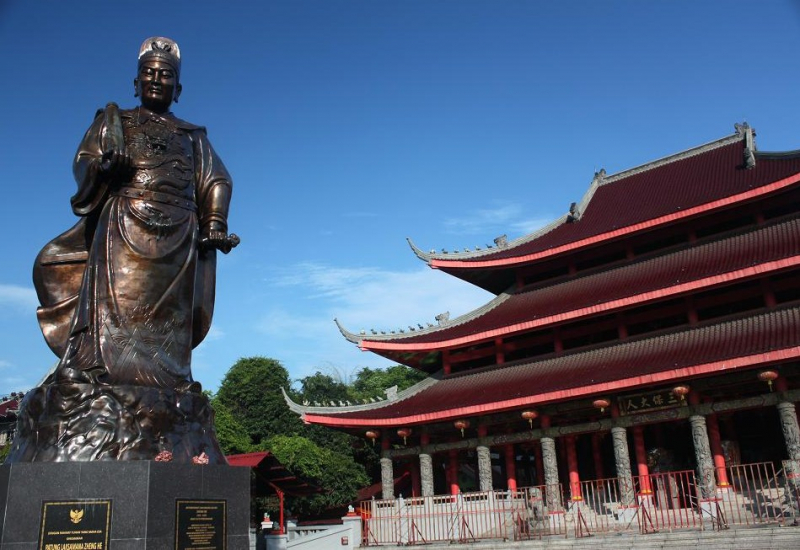
The Statue of Zheng He in Front of Sam Poo Kong Temple - harindabama.com Zoland Animation












